By understanding the characteristics of Japanese eel species and their specific needs, farmers can successfully cultivate them in controlled environments. Japanese eel farming, also known as Anguilla japonica aquaculture, is a thriving industry in East Asia. To ensure successful Japanese eel farming practices, farmers must comprehend their behavior patterns during different stages of life. This knowledge helps provide appropriate conditions that mimic nature while ensuring optimal growth rates and overall health.
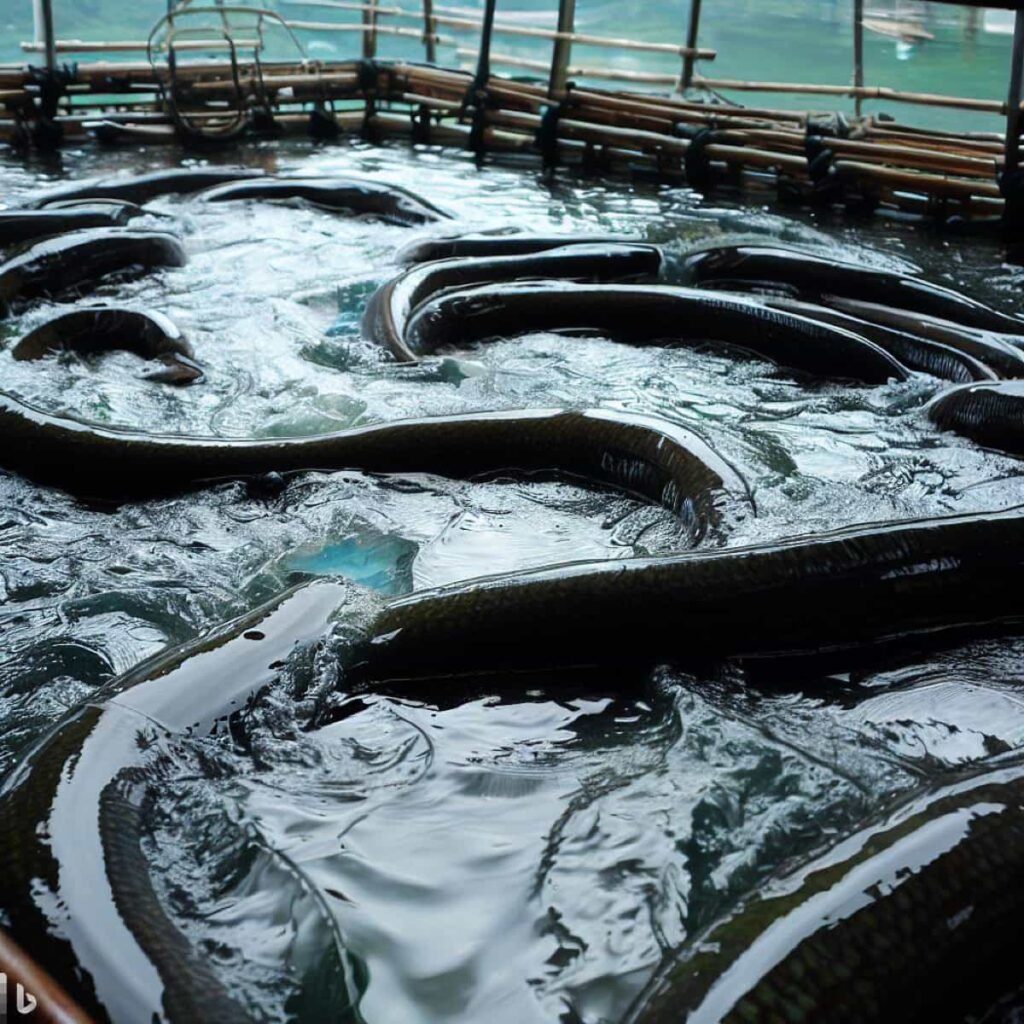
Identifying Suitable Water Sources for Eel Farming
Eels require specific water conditions to thrive and grow successfully. It’s important to look for a clean and reliable water source. Eels are sensitive creatures that can easily be affected by pollutants or contaminants in the water. Therefore, selecting a source free from industrial waste or agricultural runoff is essential.
Additionally, pay attention to the oxygen levels in the water. Aquatic plants or proper aeration systems can help maintain optimal oxygen levels. Furthermore, analyze the pH level of potential water sources. Ideally, eels thrive in slightly alkaline waters with a pH range between 6 and 8. Assess if natural predators, such as birds or larger fish near your chosen site, could threaten your eel population.
Designing and Constructing Eel Ponds or Tanks
Designing and constructing eel ponds or tanks is crucial in setting up a successful Japanese eel farming operation. These aquatic habitats serve as the primary environment for the growth and development of the eels, providing them with suitable living conditions to thrive. Several factors must be considered when designing a Japanese eel pond or tank. First and foremost is the size of the enclosure. Eels require ample space to swim around and exercise, so providing a sufficiently large area for their activities is essential.
In case you missed it: Profitable Carp Farming in the Philippines: A Step-by-Step Guide for Carp Fish Culture
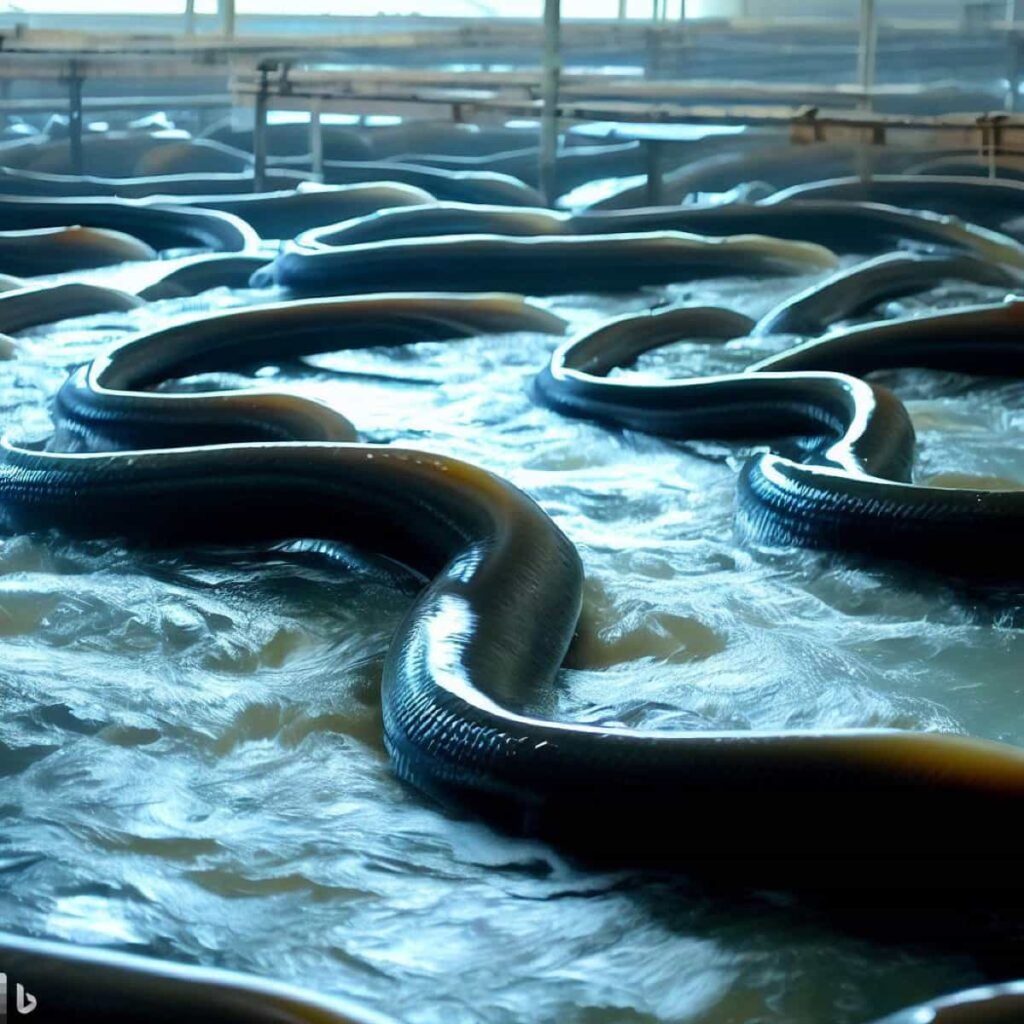
The depth of the pond or tank is also important. Eels are bottom-dwelling creatures that prefer deeper waters, so ensuring adequate depth will allow them to exhibit their natural behavior. Additionally, water quality management should be a top priority during construction. Proper filtration systems and regularly monitoring parameters such as temperature, pH levels, oxygen content, and ammonia concentration are vital for maintaining optimal water conditions for your eels.
Considering sustainability practices when designing your eel enclosures can positively contribute both environmentally and economically. Implementing energy-efficient technology such as solar-powered pumps or utilizing recycled materials in construction can help reduce costs while minimizing environmental impact.
Selecting Healthy Eel Juveniles for Farming
Firstly, you’ll want to ensure that the supplier you’re working with has a good reputation and follows strict quality control measures. Look for suppliers who have experience in breeding and raising healthy eels. Next, consider the size of the juveniles. Starting with eels around 10-15 centimeters long is generally recommended. This size ensures they are old enough to handle transport and adapt well to their new environment.
In addition to size, pay attention to the overall condition of the juveniles. Look for bright skin coloration without any signs of discoloration or lesions. Their bodies should be plump and firm, indicating good health. Another important factor is behavior. Healthy juveniles should be active and alert, swimming smoothly without signs of distress. Consider the source of the juvenile eels. Opt for locally sourced eels if possible, as they adapt better to local conditions than imported ones.
Providing Optimal Water Quality Conditions for Eels
Eels are highly sensitive to changes in water quality, so it’s important to maintain stable and suitable conditions throughout their growth cycle. Eels thrive in freshwater environments with good oxygen levels, so consider installing an aeration system to enhance dissolved oxygen content. Regularly testing water parameters such as pH, temperature, ammonia, nitrate, and nitrite levels is essential to monitor and maintain ideal conditions.
In case you missed it: How to Convert a Swimming Pool Into Koi Fish Pond: Ideas, Tips, and Techniques
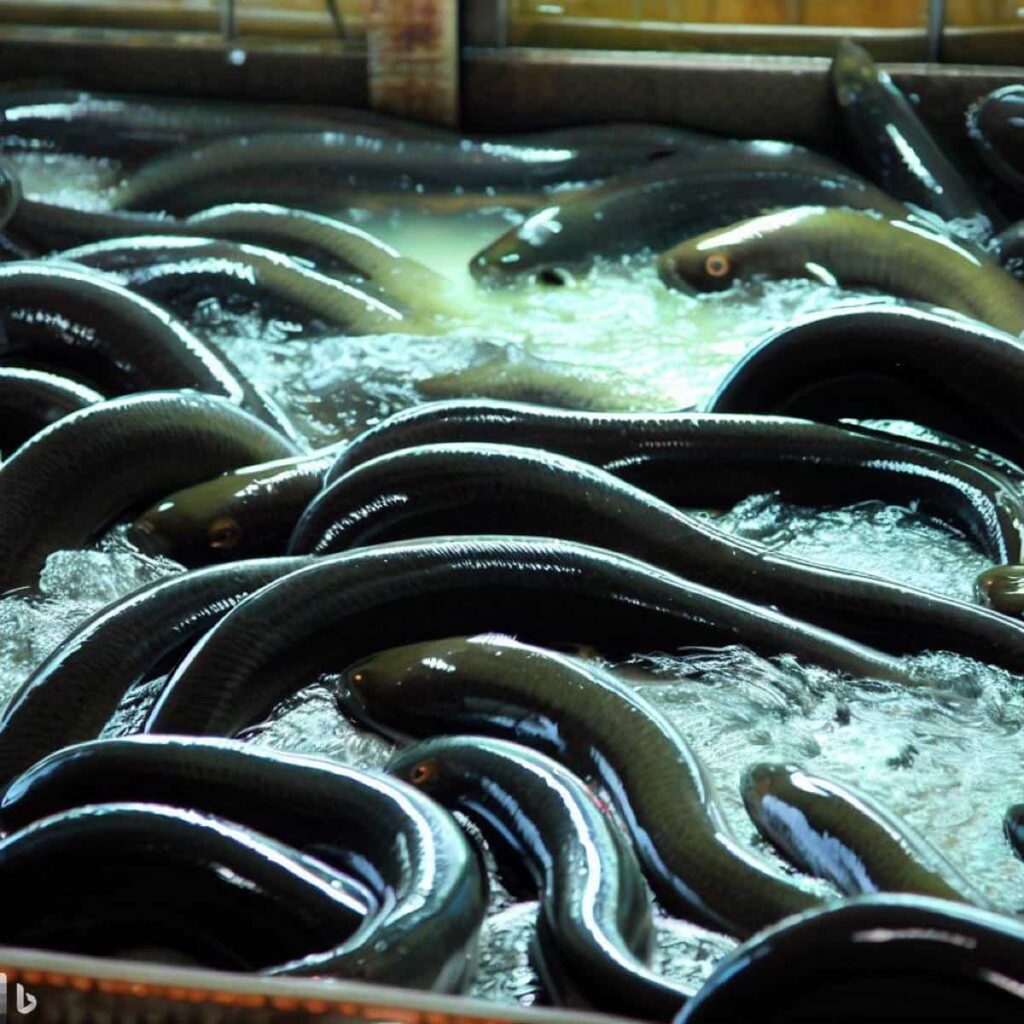
Proper filtration systems can help remove waste products and prevent the buildup of harmful toxins. A well-designed filtration system should include mechanical filters like screens or sieves to remove solid particles, biological filters to support beneficial bacteria growth that break down organic matter, and chemical filters like activated carbon to remove impurities. Furthermore, controlling water temperature is vital to eel health and growth.
Implementing Proper Feeding Techniques for Eels
Feed Selection: Choose high-quality feed that meets the nutritional requirements of eels at different stages of growth. Pellets or formulated feeds specifically designed for eels are commonly used.
Feeding Frequency: Eels should be fed multiple times daily, preferably 3-4 times, to meet their metabolic needs. Smaller amounts should be provided during each feeding session to prevent overfeeding and wastage.
Feeding Amount: The amount of feed given should be based on the size and age of the eels as well as water temperature conditions. Adjustments may be necessary as they grow.
Feed Distribution: Ensure even feed distribution throughout the pond or tank to avoid competition among eels during feeding time. Use appropriate feeding devices such as automatic feeders or hand scattering techniques.
Fish Health Monitoring: Regularly monitor the health and appetite of your eels to identify any signs of disease or poor nutrition. Adjust feeding practices accordingly if needed.
Managing Water Temperature and Light Conditions
Water temperature plays an important role in the metabolism of eels. It affects their feeding patterns, digestion, and overall health. To ensure the ideal temperature range for your eel farm, it’s important to have proper insulation for your ponds or tanks. In addition to temperature, lighting conditions also impact eel behavior. Japanese eels prefer warm waters ranging from 20-30°C. Finding a location where these temperatures can be maintained consistently throughout the year is important.
To maintain suitable light levels in your eel farm, consider using adjustable lighting systems that mimic natural day-night cycles. Controlling the duration of light exposure can help regulate feeding habits and promote healthy growth. Regular monitoring of water temperature fluctuations is essential to identifying any potential issues promptly. Utilize reliable thermometers throughout different areas of your farm to ensure consistency in temperature readings.
Preventing and Treating Common Diseases in Eel Farming
It is crucial to maintain the health and productivity of your eel farm. Diseases can significantly impact your eels’ growth and survival rates, ultimately affecting your profits. Therefore, implementing effective disease prevention measures is essential. One common disease that affects Japanese eels is Edwardsiellosis. To prevent this disease, it is important to maintain proper water quality conditions and regularly monitor for any signs of illness or stress in the eels.
In case you missed it: Eel Farming in the Philippines: A Profitable Eel Fish Business for Aqua Farmers
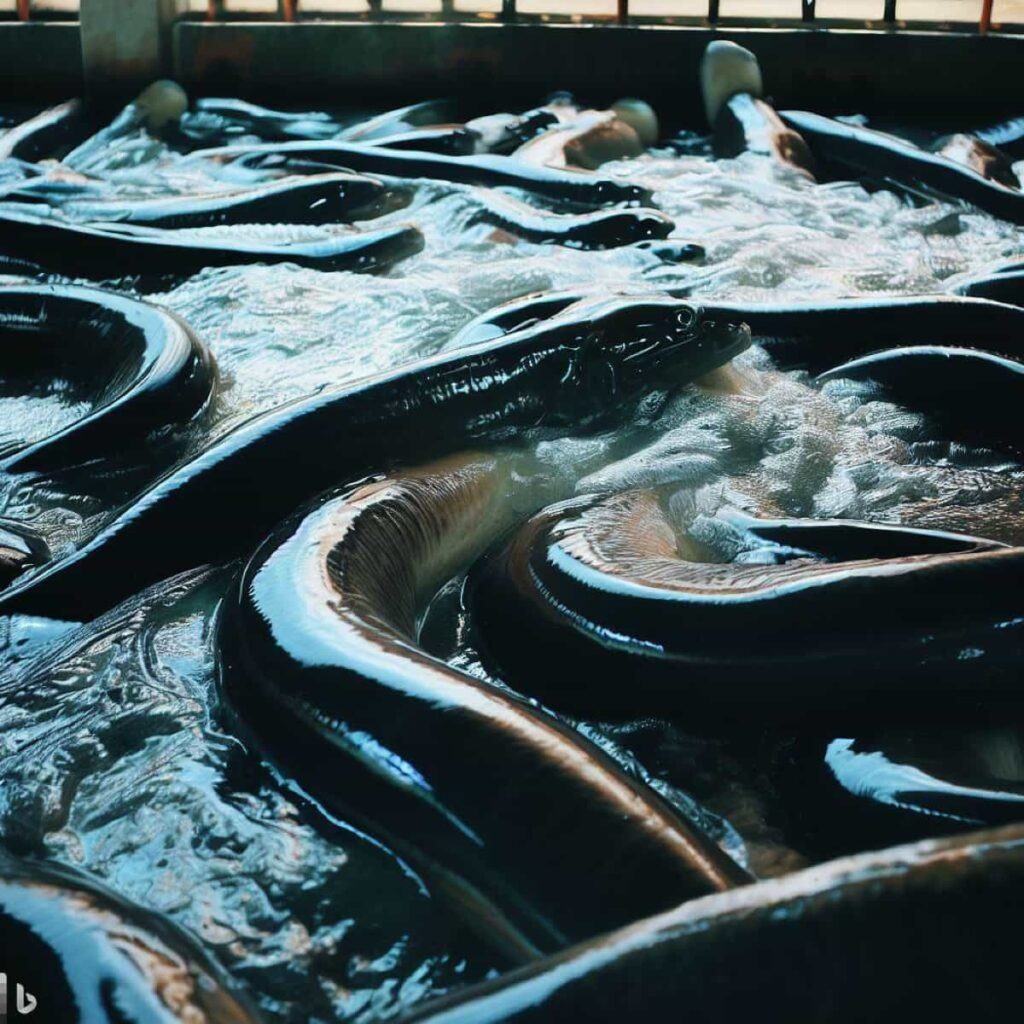
Red fin disease is another condition that can affect eels on a farm. Regular observation and early detection are key in preventing the spread of this disease among your eel population. The presence of red eel pests should also be closely monitored. Regular parasite control measures such as medication or natural remedies can help keep these pests at bay. Viral erythrocytic necrosis (VEN) is a viral infection primarily affecting adult Japanese Eels.
It causes anemia, hemorrhaging, and eventually death if left untreated. Ensuring strict biosecurity measures, including quarantine protocols for new additions to your farm, can help minimize VEN outbreaks. Fungal infections are also a concern in eel farming operations. These infections typically occur when poor water quality conditions or fish are stressed due to overcrowding or suboptimal environmental factors such as temperature fluctuations.
Parasitic infections pose another challenge for farmers as they drain energy from infected individuals, leading to stunted growth rates. Regular monitoring combined with appropriate treatment methods like medicated feed or chemical treatments will aid in keeping parasitic populations under control. Proactively preventing these diseases through proper management practices like maintaining optimal water quality, implementing strict biosecurity measures, and regularly monitoring eels.
Monitoring the Growth and Development of Eels
By closely observing their progress, farmers can ensure that the eels thrive and reach their full potential. One important factor to monitor is their feeding habits. Eels should be consuming enough food to support healthy growth, but overfeeding can lead to waste buildup in the water. In addition to physical measurements, visual observations are also essential for monitoring the health and behavior of the eels. Skin color or appearance changes may indicate stress or disease, while abnormal swimming patterns could suggest environmental issues.
Harvesting and Processing Eels for Market
Harvesting eels can be a delicate process, as they are slippery creatures that can easily wriggle out of your grasp. However, you can ensure a smooth harvesting process with proper techniques and equipment. One method commonly used is to drain the water from the pond or tank where the eels are being raised. As water levels decrease, catching the eels by hand or with small nets becomes easier. It’s important to handle them gently to avoid causing stress or injury.
After harvesting, it’s crucial to quickly transport the eels to a processing facility to prepare them for market. This involves cleaning and gutting each eel before packaging them in suitable plastic bags or boxes. Proper storage conditions are essential in preserving their quality and preventing spoilage during transportation.
Marketing Strategies for Japanese Eel Products
One effective approach is to highlight the unique qualities of Japanese eels. Educate consumers about the traditional methods used in eel farming and how they contribute to the superior taste of these products. Utilizing various marketing channels is also essential. Create an appealing website or online store where customers can purchase your eel products easily. Utilize social media platforms to showcase mouth-watering images and engage with your target audience.
Collaborating with restaurants and chefs who specialize in Asian cuisine can help promote your Japanese eel products as well. Offer them samples or create special menu items featuring your eels to entice diners. Additionally, consider packaging design as part of your marketing efforts. Eye-catching labels that reflect the authenticity and quality of your Japanese eel products can make a significant difference on store shelves.
Ensuring Compliance with Legal and Environmental Regulations
Familiarize yourself with the local regulations governing eel farming in your area. This includes obtaining necessary permits or licenses to operate a fish farm. It’s also important to stay updated on any changes or additions to these regulations. In addition to legal requirements, paying attention to environmental regulations is equally important. Eel farming can impact water quality and ecosystem balance if not managed properly. Moreover, ensure you are sourcing your eel juveniles from reputable suppliers that adhere to sustainable fishing practices.
In case you missed it: Grouper Fish Farming Business Plan: Ultimate Guide to Breeding and Reproduction Techniques
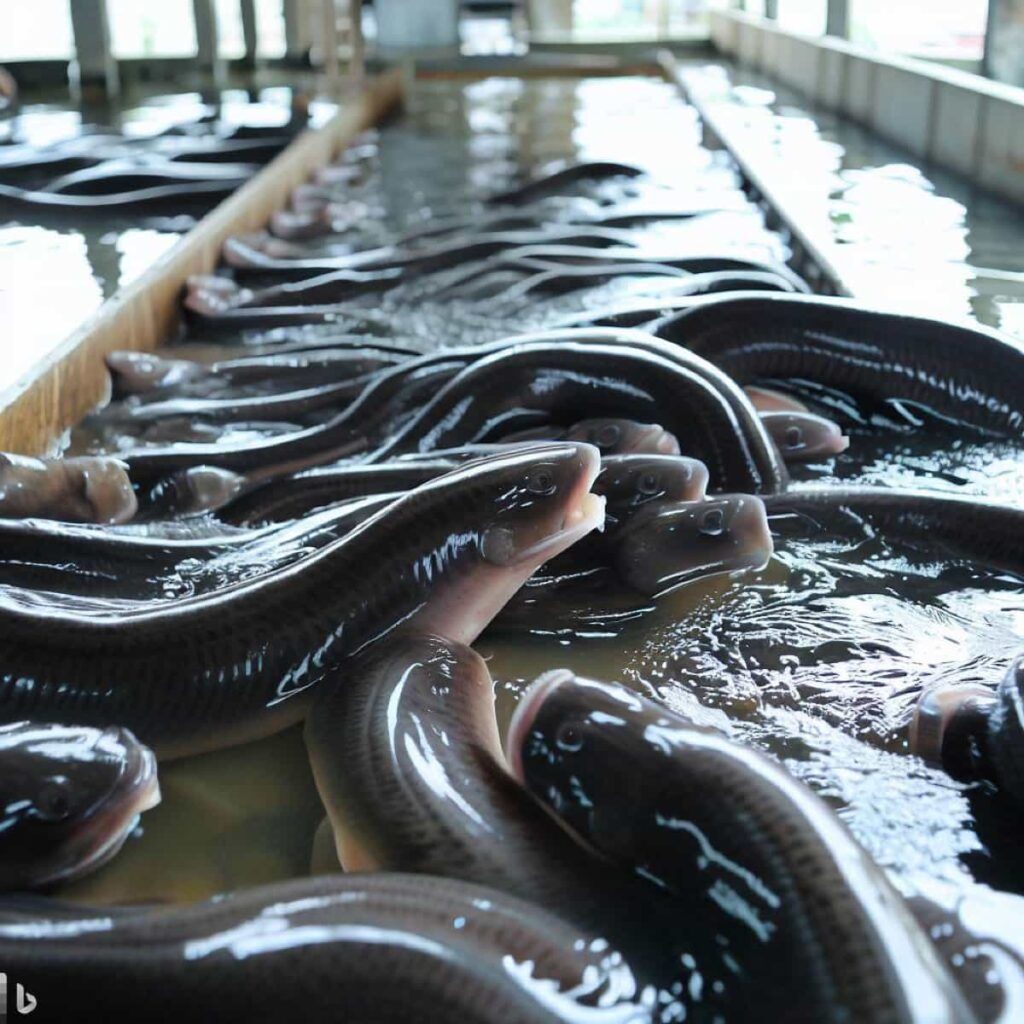
Regular monitoring and documentation of water quality parameters should be part of your routine operations. Maintaining transparent communication with regulatory agencies will go a long way in demonstrating your commitment to compliance. Cooperating with inspections and audits shows that you take responsibility for adhering to the rules set forth by authorities.
Implementing Sustainable Practices in Eel Farming
One key aspect of sustainable eel farming is responsible feed sourcing. Instead of relying solely on wild-caught fish or non-sustainable ingredients, farmers can opt for alternative protein sources like insect meal or plant-based feeds. This reduces pressure on marine resources and promotes a more balanced ecological footprint. Efficient water management is another important practice in sustainable eel farming. Implementing water recycling systems and natural filtration techniques can help conserve water resources and minimize discharge into surrounding environments.
Minimizing disease outbreaks through proper hygiene protocols is also vital for sustainability. Regular cleaning of tanks or ponds and quarantine procedures for new stock can reduce the need for antibiotics or chemicals that may harm both eels and their habitats. Furthermore, embracing renewable energy sources such as solar power or wind turbines can significantly reduce greenhouse gas emissions associated with conventional energy usage in eel farms.
Evaluating Financial Viability and Return on Investment in Eel Farming
One key aspect is the initial investment to set up an eel farm. This includes costs associated with constructing ponds or tanks, purchasing equipment, acquiring healthy eel juveniles, and ensuring optimal water quality. It’s important to estimate and compare these expenses against potential returns carefully. Another factor to evaluate is the market demand for Japanese eels and their products. Market research can provide valuable insights into pricing trends, consumer preferences, and competition.
Understanding these factors can help identify opportunities for differentiation and maximize profits. Monitoring growth rates and tracking production efficiency are also vital indicators of financial success in eel farming. Regularly measuring key performance metrics like average weight gain per day can help identify areas for improvement or optimization. Adapting strategies accordingly can help ensure long-term financial viability in this dynamic industry.
Continuous Learning and Improvement in Japanese Eel Farming Techniques
One way to stay informed is attending eel farming workshops, seminars, and conferences. These events provide a platform for farmers to exchange knowledge, learn from experts, and explore innovative techniques. Additionally, joining professional associations or online communities can offer valuable networking opportunities and access to resources to improve farming methods.
Regularly researching new breeding methods or disease prevention strategies is also vital. Keeping up with scientific developments allows farmers to implement best practices based on evidence-based research findings. This dedication to ongoing education ensures that farms remain at the forefront of the industry while minimizing risks associated with outdated techniques.
In case you missed it: The Rise of Fish Farming in Kenya: Key Rules to Start from Scratch
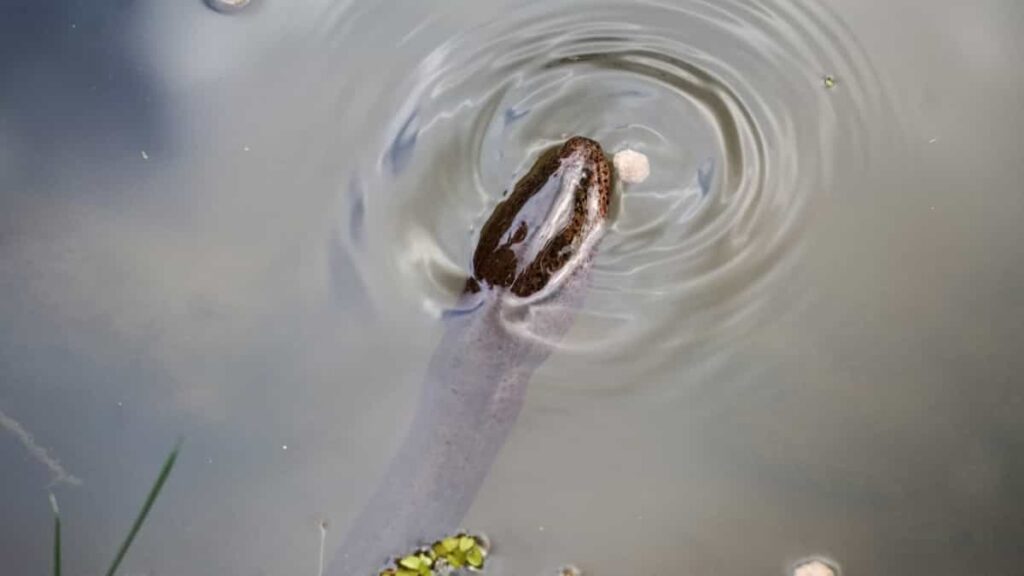
Furthermore, seeking customer feedback is essential for understanding market demands and consumer preferences. By actively listening to customer feedback regarding taste preferences or packaging options for eel products, farmers can adapt their farming practices accordingly, enabling them to better cater to market needs.
Conclusion
The popularity of Japanese eels can be attributed to their unique flavor profile and culinary versatility. Cultivating Japanese eels involves carefully designing and constructing suitable ponds or tanks that mimic their natural habitat. These setups must provide optimal water quality conditions for the healthy growth and development of the eels.
Selecting healthy juvenile eels is crucial for successful farming. Japanese eels have high market value and demand in East Asia, making them a lucrative investment opportunity. Additionally, Japanese eel farming allows for better quality control throughout production.
- Crops Grown in Summer Season: Best Choices for Summer Gardening
- Organic Pest Control for Tomato Farming
- How to Maximize Sheep Farming Profit
- Broccoli Varieties: Choosing the Right Cultivars for Your Farm
- How to Raise Pigs in Your Own Backyard: A Comprehensive Guide
- Budget Friendly Sheep Shed Ideas: Cheap and Low-Cost Tips
- How Much Do Cattle Farmers Make: Revenue Streams in Cattle Farming
- Management Pests and Diseases in Your Cotton Field
- Sheep Farming Business Plan for Beginners
- Aquaponic Farming at Home: A Step-By-Step Guide
- Profitable Village Farming Business Ideas in 2024
- High-Yield Aquaculture: Fast-Growing Fish for Farming
- Effective Fish Pond Construction Techniques for Beginners
- Irrigation and Water Management in Pineapple Farming
- Blossom to Harvest: Mastering Flowering and Pollination in Papaya Farming
- Pig Fattening Essentials: From Selection to Sale for Beginners
- Raising Wagyu Cattle: A Complete Guide for Premium Beef Production
- Soil Types and Their Water Holding Capacity
- Optimizing Irrigation Schedules for Coconut Groves for Enhanced Yield
- Espresso Your Garden: Coffee Grounds for Healthier Acid-Loving Plants
- The Best Soil Mix for Snake Plants: How to Mix Your Own Snake Plant Soil
- Green Thumb Success: Expert Tips for Cultivating Greenhouse Beans All Year Round
- Bloom All Year Round: The Ultimate Guide to Indoor Hyacinth Care
- Eco-Friendly Gardening: How to Make Liquid Fertilizer from Kitchen Waste
- Ultimate Guide to Grow Anise in Pots: Explore Seed Propagation to Harvesting
- Guide to Raising Chester White Pigs: Discover Breed Facts to Growth Management
- Mastering the Elegance: The Ultimate Guide to Weeping Cherry Tree Care, Planting, and Maintenance
- Ultimate Guide to Planting Garlic in Grow Bags: Growing Strategies for Beginners
- How to Fix Spider Plant Leaf-Related Problems: Natural and Organic Remedies
- 10 Reasons Why Your Tulsi Plant is Shedding Leaves: Home Remedies and Solutions
- Optimizing Growth and Yield: The Advantages of Palm Bunch Ash Fertilizer
- Utilizing Neem Oil Extract as a Natural Pesticide for Hydrangea
- From Soil to Harvest: Various Ways in Which Farmers Can Use AI Tools
- Steps to Encourage and Induce Citrus Flowers: A Comprehensive Guide
- How to Fix Snake Plant Leaf-Related Issues: Natural and Organic Remedies
- Transform Your Garden into a Fragrant Oasis with Raat Ki Rani (Night Blooming Jasmine)
